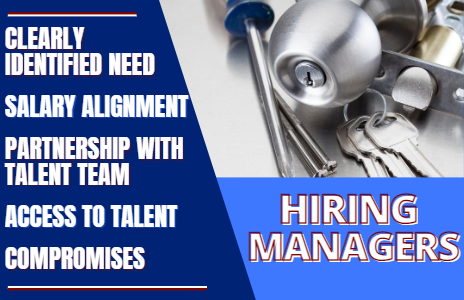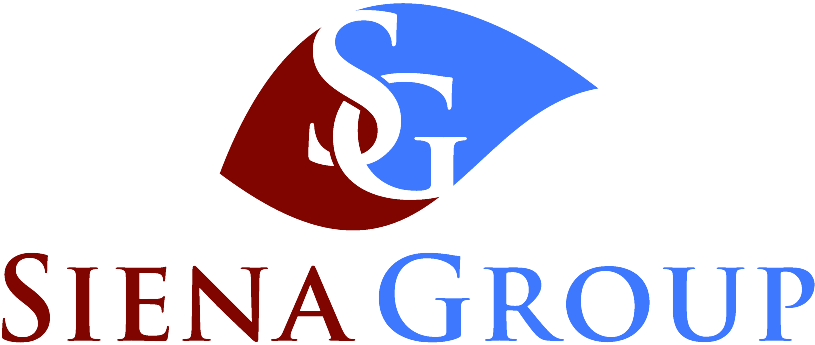The Right Tools for the Right Job
by Keith Brown, President & Owner, Siena Group.

Have you ever been up on a ladder, ready to do what you need to do, and then you realize that you forgot something?
Or, you knew that the hardware provided is so cheap that you know you are going to fight it… but still try to make it work anyway?
The outcome is always the same: more effort, more work, and more frustration!
I was recently hanging some new curtains in my office (you do what you gotta do as a small business owner) and had everything I needed. I’m fairly handy and capable with tools, projects, DIY, etc. (thanks Dad!). As I was all ready to install the new brackets, I opened the supplied pack of hardware and knew that the screws were going to be problematic. But, being at the office and without access to my stash of good hardware at home, I proceeded.
And failed.
And ended up spending a lot more time than what was planned or needed due to having to rework and fight the soft screw (I swear they were made out of soft aluminum or some such metal!).
Hence the life lesson, AND the topic of this blog: use the right tools for the right job in the right way.
As I thought through the wastes I endured that afternoon – time and effort in my case – I could readily connect the dots to what I see in the market these days for hiring managers, organizations, and candidates.
There is nothing overly remarkable about the list, but we can all most certainly be reminded about some of the key tools we need to have in place to be successful when it comes to searching for the right new person on your team or for a new role.
HIRING MANAGERS/ORGANIZATIONS

- Clearly identified need. No, I’m not joking. You would be surprised by how often a talent need is not specified in a way that is actionable. How can you initiate a targeted search without first understanding the role at a very high level that includes both the technical and hard skills as well as the soft skills and cultural fit? The answer is you can’t, and there is a significant amount of waste in the form of time, energy, and resources lost when assumptions are made about a particular role. The job description is one tool that will help in this regard but it is only one piece. JDs are generalized and other tools are necessary – namely, #3 below.
- Salary alignment. You would be surprised – or maybe not – at the state of the crazy market we are in. The ranges that I see on certain roles right now are remarkable: from early-career engineers through mid-level management is where I see the most volatility. That is good, old-fashioned supply and demand. So, you need to know where you can flex – base, bonus, sign-on bonus, relocation package, benefits, vacation time, and work structure – all of these are a combined set of tools you can use to land the needed talent. Additionally, you may need to go back to step #1 above and reevaluate the role if you find you are not aligned in total compensation. Holding fast on a salary can make for a VERY long process – we are talking 6-12 months!
- Partnership with talent team. This will vary with company size. The talent “team” may be the head of HR for your company! If that is the case, leveraging a trusted external resource is always a great tool to use. If you have an internal team or are using an external team to partner with your organization, do just that – partner with them! Work together to prioritize the search. Make sure they understand all those specifics from #1. Make sure you understand the potential constraints and levers you can pull in #2. Sticking with the tool analogy, you may be the one up on the ladder doing the drilling and installation and they are bracing the ladder – or vice versa – but success happens when you are working together on a common goal, expectations are aligned, and success is clearly defined. This is motherhood and apple pie stuff, but it doesn’t happen like it should in a lot of cases and that is where wastes start to creep in.
- Access to talent. This is everything right now! It is hard to find people and even harder to relocate them. I’ve said this before, but most of the manufacturing roles happen where the stuff is made, and moving to that location is just part of the job. But it is hard to move people these days. Take advantage of your team and explicitly ask them to network on the company’s behalf to recruit and import talent. Get heavily connected on LinkedIn. Participate in industry shows and venues (online and in person). Work with trusted resources and external partners. And be consistent in your efforts – it will pay off.
- Compromises. You will need to make some. And it isn’t a bad thing! I don’t know when the word compromise started to have negative connotations. It has somehow flipped from working together towards a common goal to giving in and losing. This is an absolutely critical tool and one that should be employed in any search and with any talent team. What are those things where we can flex? This is a topic that is talked about a lot in a lot of different arenas. In recruiting, location is a big one and that means giving a bit on finding someone with the perfect technical background versus someone that is local that has 80% of the technical skills. You may need to adjust the level – up or down – for the right person. The smaller the company, the harder it is to compromise and that is understandable. But invest the time to think through this a bit. What are the absolute must-haves? Why? What are the high wants? Why?
[For more insight on how to compete for today's talent, read the February Thermoforming Report.]
CANDIDATES

- Clearly identified role. Yes, the parallel is real! Think about those things you really like to do and why you like to do them. Evaluate your skill set. Understand what is important to you. Go beyond the typical job description and think about the kind of culture where you thrive. What are those things that are important to you about the role, the organization, and the location? Once you have invested the time to parse all of this, also think about where some compromises can be made. It is important to go into a search deliberately and with clear expectations because compromise is likely and having clarity will help you discern the opportunity wisely.
- A strong resume. This cannot be understated. As I tell nearly every candidate, “A great resume is the key that I get to turn to open the door to an interview.” I am not advocating for or against paid resume services (though I do have an opinion). What I am stressing is that having an amazing resume is like having the absolute best hammer on the planet when you need to hammer a nail. Resumes must do a phenomenal job of representing both what you do and especially what you’ve done. It is not an easy task to boil down a career into 2 or 3 pages; to do so in a compelling yet readable way is even tougher. Yet, it is a critical part of the process and must be compelling, powerful, and concise. Invest the time and leverage all the content out there to best represent yourself via your resume.
- A networking approach. I’m a broken record – network, network some more, and when you are done, go network some more. Your entire mindset should be around networking. Think of it as the toolbox where all the other search tools reside. It is very hard to carry around all of those tools without having something to carry them. Networking is that thing. Friends, colleagues, groups, various social platforms – anything and everything to get yourself out there. If you are needing to quietly and confidentially look for a new role, things get tougher but do not discount having conversations and networking with confidants. In a previous Thermoforming Report, I referenced a recent study that concluded what has been a reality for years: 70-80% of every job is filled via networking. Widening your networking to acquaintances creates an exponential boost in your visibility, resulting in a shorter hiring process, greater job satisfaction, and longer employment! Just do it!
- A talent partner. This person or people can be any number of things – friends, your spouse, your mentor, a networking group, a trusted recruiter, and more. Having someone to bounce ideas off of, to review your resume, to help be your sounding board when you are practicing interviewing is very impactful. You aren’t in this alone nor should you be. Finding a new job is a big deal. It’s draining (emotionally and financially), stressful, and can strip you of your self-confidence. Make sure you surround yourself with positivity and encouragement. Who knows, someday the roles may be reversed, and you’ll know just how to help them!
- Interview skills. If the resume is the hammer, strong interview skills are the powered equipment – impact drills if I may. You are not a professional interviewer! You are a professional engineer or operations leader or supply chain guru. Interviewing is a learned skill just like anything else. That means you must invest time to do it effectively. Practice. Review guides. Role-play with your talent partner – and, I would recommend that you role-play as both the candidate and as the hiring manager. Thinking about what may be important about a particular role and generating questions that you would ask a potential candidate is very powerful. Preparation and specific skills can help you polish your interview presence, calm the jitters, and demonstrate your ability to form an authentic connection with the interviewer. “Before anything else, preparation is the key to success.” — Alexander Graham Bell.

THE FINAL TAKEAWAY
As I mentioned, these lists are not novel or new. They are, however, great reminders that having the right tools makes a big difference.
Knowing how to use the tools is key.
And knowing when to use those tools is where the magic happens.

At Siena Group, we are your Thermoforming Talent Partner! With more than 30 years of experience in manufacturing, hiring & recruiting talent, we bring a greater understanding of the companies we partner with and the candidates we pursue. Let’s Strengthen Your Search!
Share our post with others
Love what you see? Share it with your connections now.
